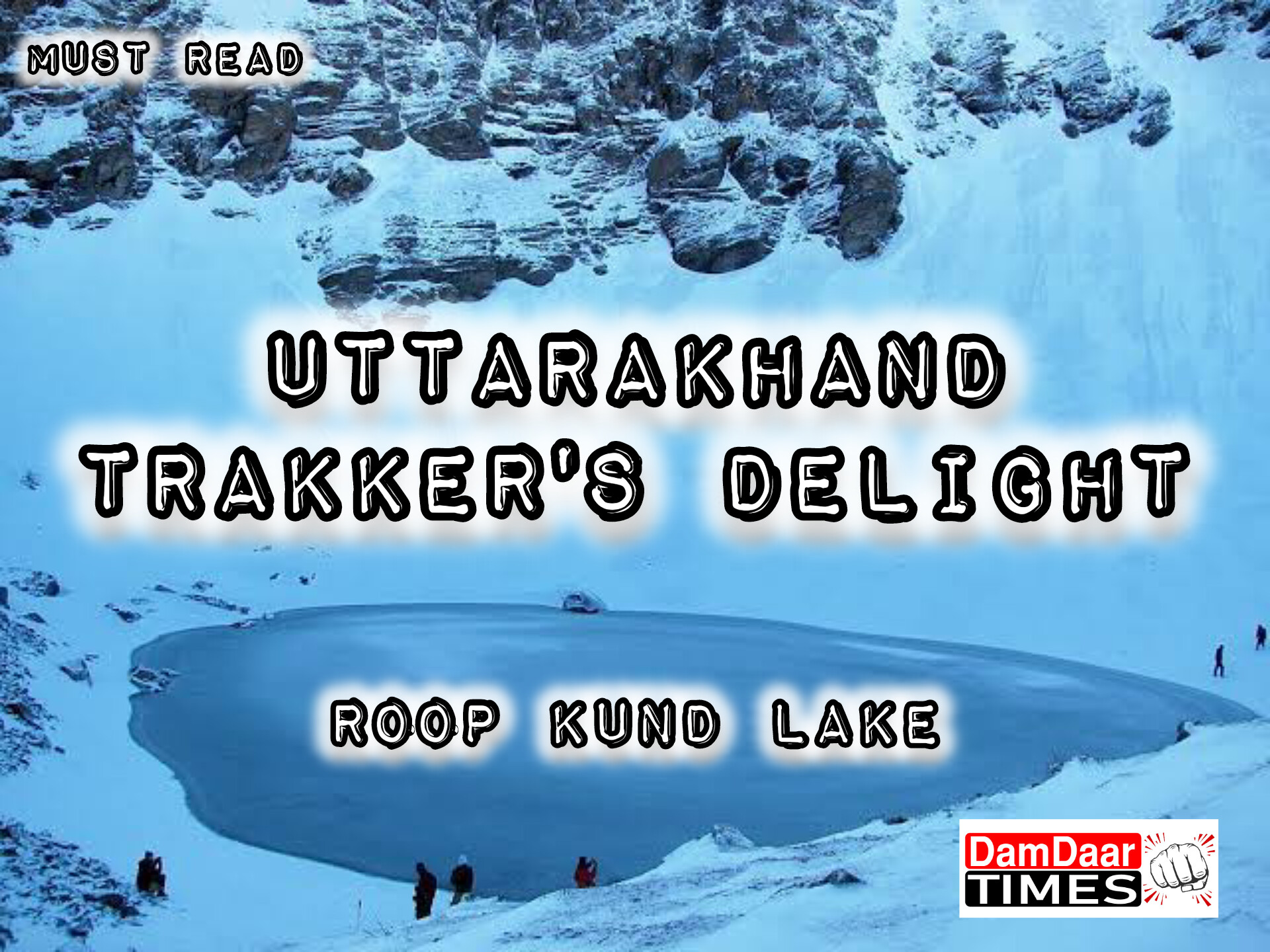
A Trekker’s Delight: Roopkund Lake and Valley of Flowers in Uttarakhand
Introduction
Nestled amidst the breathtaking landscapes of Uttarakhand, Roopkund Lake and the Valley of Flowers stand as epitomes of natural beauty, adventure, and spiritual allure. These trekking destinations have lured avid trekkers and nature enthusiasts from around the globe. In this detailed guide, we embark on a virtual journey through the mystical trails leading to Roopkund Lake and the enchanting Valley of Flowers, exploring the diverse flora, fauna, and the cultural richness that define these Himalayan gems.
Roopkund Lake: The Mystery Unveiled:
The Journey Begins
Nestled at an altitude of about 16,500 feet, Roopkund Lake, also known as the “Mystery Lake,” is a glacial lake surrounded by snow-clad peaks and lush alpine meadows. The trek to Roopkund Lake is a challenging yet rewarding adventure that takes you through dense forests, quaint villages, and meadows adorned with a riot of colors during the summer months.
Highlights:
– Kathgodam to Lohajung: The journey begins at Kathgodam, and after a scenic drive, trekkers reach Lohajung, the starting point of the Roopkund trek.
– Bedni Bugyal: A picturesque meadow at an elevation of around 11,000 feet, Bedni Bugyal offers stunning views of Trishul and Nanda Ghunti peaks.
– Ali Bugyal: Renowned as one of Asia’s largest alpine meadows, Ali Bugyal presents a surreal landscape carpeted with vibrant flowers.
The Mystery of Roopkund
Roopkund gained fame not only for its breathtaking beauty but also for the skeletal remains found near its shores. The lake is home to hundreds of ancient human skeletons, dating back to the 9th century. The mystery surrounding these remains has intrigued historians, anthropologists, and trekkers for decades. The prevailing belief is that the skeletons belong to a group of pilgrims caught in a severe hailstorm.
Cultural Significance:
– Nanda Devi Raj Jat Yatra: The Roopkund trek is closely associated with the Nanda Devi Raj Jat Yatra, a traditional pilgrimage held once every twelve years.
– Bhagwabasa: The last human settlement before reaching Roopkund, Bhagwabasa, is home to a small temple dedicated to the goddess Nanda Devi.
Valley of Flowers: Nature’s Extravaganza.
A Floral Paradise
Tucked away in the West Himalayas, the Valley of Flowers National Park is a UNESCO World Heritage Site known for its rich biodiversity and vibrant floral displays. The trek to the Valley of Flowers is a celebration of colors, with the landscape adorned by a myriad of alpine flowers, meandering streams, and stunning mountain views.
Highlights:
– Ghangaria: The base camp for the Valley of Flowers trek, Ghangaria serves as a gateway to both Hemkund Sahib and the Valley of Flowers.
– Hemkund Sahib: A revered Sikh shrine, Hemkund Sahib is situated at an altitude of 15,200 feet and is surrounded by seven snow-capped peaks.
– Bhundhar and Tipra Glacier: The Valley of Flowers trek offers breathtaking views of the Bhundhar and Tipra glaciers, contributing to the region’s surreal beauty.
Conservation and Preservation
Given its ecological significance, the Valley of Flowers has strict regulations in place to preserve its fragile ecosystem. Trekkers are required to obtain permits, and camping is restricted to designated areas. The park is home to a variety of endangered species, including the Asiatic black bear, snow leopard, and blue sheep.
Conservation Initiatives:
– Restricted Access: To minimize human impact, the number of visitors allowed into the Valley of Flowers is regulated.
– Research and Monitoring: Ongoing research and monitoring initiatives help understand the region’s flora and fauna, contributing to conservation efforts.
Practical Tips for Trekkers
Physical Preparation
Both the Roopkund Lake and Valley of Flowers treks demand a certain level of physical fitness due to their high altitudes and challenging terrains. It is advisable to engage in cardiovascular exercises, strength training, and altitude simulation workouts in the weeks leading up to the trek.
Essential Packing List
1. Trekking Gear: Sturdy trekking boots, trekking poles, and a comfortable backpack are essential.
2. Clothing: Layered clothing to accommodate varying temperatures, including waterproof jackets and pants.
3. Sleeping Bag and Tent: Lightweight and durable, suitable for high-altitude camping.
4. First Aid Kit: Include essentials like altitude sickness medication, pain relievers, and bandages.
5. Hydration and Nutrition: Carry a refillable water bottle and energy-rich snacks.
6. Permits and Identification: Obtain necessary permits and carry government-issued identification.
Ideal Time to Visit
The best time to embark on these treks is during the summer months of May to June and September to October. During this period, the weather is relatively stable, and the trails are adorned with blooming flowers.
Conclusion
In conclusion, Roopkund Lake and the Valley of Flowers in Uttarakhand beckon trekkers and nature enthusiasts with their unparalleled beauty, cultural richness, and the thrill of adventure. The Roopkund trek, with its mysterious lake and ancient skeletons, adds an element of intrigue to the awe-inspiring landscapes. On the other hand, the Valley of Flowers presents a botanical marvel, a riot of colors set against the backdrop of the majestic Himalayas.
As you prepare for these treks, immerse yourself in the physical and cultural dimensions of the journey. Respect the fragile ecosystems, adhere to conservation guidelines, and relish the unique experiences that each trail unfolds. Roopkund Lake and the Valley of Flowers are not just destinations; they are transformative journeys that leave an indelible mark on the hearts of those who traverse their mystical paths.
Follow Damdaar times on Instagram
